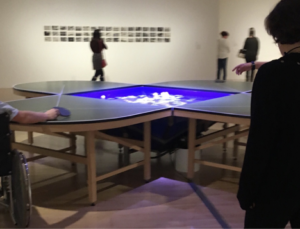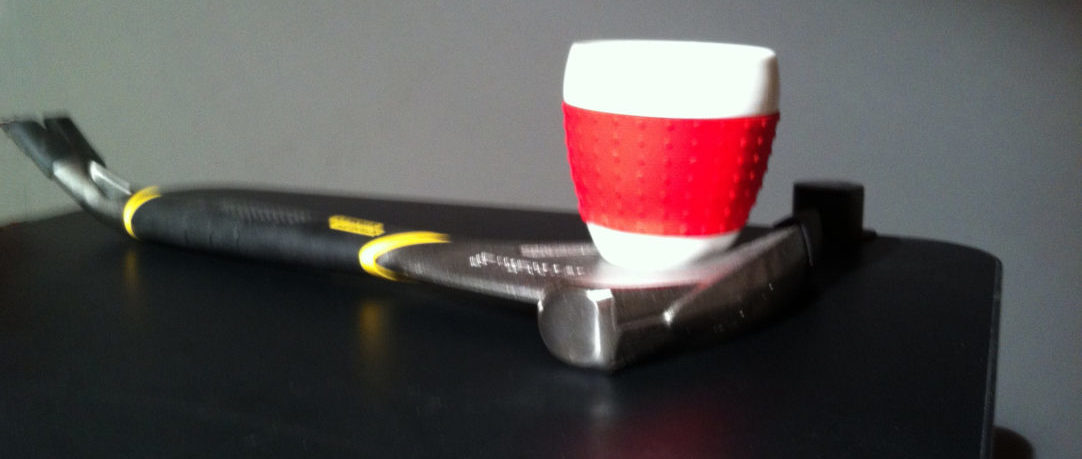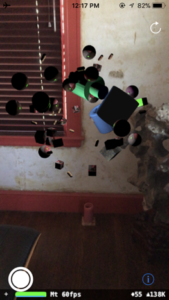Art vs. App/App vs Art
I had an Augmented Reality (AR) app rejected by Apple recently because it “wasn’t interactive enough”. My argument that it was a sculpture, didn’t get any traction with the reviewers.
In fairness, I did have a discussion with one of the reviewers and I felt that he was genuinely trying to understand my point, he just wasn’t convinced that what I was describing would have any appeal for Apple’s users.
This raises the question: what are the differences between apps and art and what are the areas of overlap, if any?
My categorization of apps would be
- Functional: The app is used to accomplish something in a domain outside the app: write; book travel; turn on your lights; etc.
- Game: near continual interaction with the app in a play context, be it competitive or non-competitive.
- Experiential: The app provides a portal into “outside” content in a low interaction experience. Outside content in this case indicates that the app is a vessel for content that is, in some sense, external to the app, e.g., books, movies, etc. Sedition art’s app is in this category as is Netflix et. al.
- Given this categorization, it’s easy to see how an AR app would tend to fall into the game category: it doesn’t provide access to any external content and it certainly isn’t functional. Additionally, it requires continual interaction to make it work.
Taken as a game, it is easy to see how an evaluator would get to the conclusion that an AR app presenting a single AR sculpture“doesn’t do enough”
The rest of the discussion requires a quick description of the steps involved in using the app
- Open the app
- Select the location to create the scene (after giving the app access to the camera)
- Place a number of objects in the scene (the number is user selectable)
- After thee objects are placed, the app places a number of noise objects in the scene to add to the visual complexity
- Explore the scene — at this point the app converts to a purely Experiential interaction, with the experience being dependent upon the onlooker’s movement in the environment
- All of these steps must be repeated each time the app is used.
This is an example of the scene being explored:
From the standpoint of what I would have liked to do with an AR piece what I’ve described is too interactive. Ideally, it wold be more like a sculpture and users could return to the same scene they had set up previously, enriching their appreciation of that scene via repeated experiences. Unfortunately, for a surprisingly large number of reasons including lighting and layout changes between sessions, that isn’t possible (and likely explains why that functionality isn’t available in Apple’s tooling).
Caveat: just want to be clear that I’m not extolling the merits of my particular app. I’m merely tying to delineate the categorical difficulties of AR vs other media. This is especially the case when there is a gatekeeper, however well intentioned, that’s trying to fit it categorization system designed to be informative for hundreds of millions of people from diverse cultures.
As I was finishing writing this, I saw this piece by Gabriel Orozeo and was reminded how fluid these boundaries actuall
y are — it’s not all Richard Serra and Call of Duty

From the wall tag
Gabriel Orozeo (b. 1962, Ialapa, Mexico; lives in Mexico City, Paris, and New York)
Ping Pong Table (Mesa de ping-pong con estanque), 1998
Mixed media Purchased with funds provided by The Acquisition and Collection Committee 2000.69
Ping Pong Table splices and doubles a PingPong table, replacing the net with a square pond filled with water lilies. Viewers are invited to play using the paddles and balls provided. However, each group of players must invent new rules and strategies, as no playbook for this game exists. Orozco’s primary concern as a sculptor is to activate the charged space between the art object and viewer. Ping Pond Table calls for a special kind of engagement in which museum goers are not passive viewers but active participants. Games like chess, billiards, and table tennis, with their strategies and rules, are expressions of how cultures believe the universe operates. Orozco asks the audience to reorder, communally and provisionally, the principles that structure our reality. In this way, the interactive sculpture establishes the museum as a public sphere and space for democratic civic engagement.


Leave a Reply